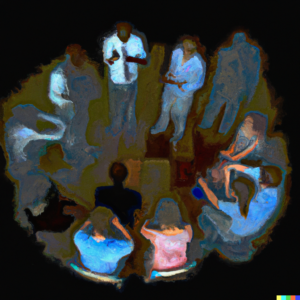Teaching Civilized Discourse: 4 Essential Lessons for Online Discussion

My fifth-graders’ keyboarding skills aren’t that great yet, but they certainly have a lot to say. They are passionate about changing the world and are eager to jump into our online discussions of some of the world’s thorniest problems. But, for most of my students, their only experience with online text has come from participating chat rooms in Minecraft (or other gaming contexts), texting, and their first awkward attempts at email. That tells me this age is a crucial time for teaching online discussion skills.
Here are the lessons, skills, and understanding I hope for my students to gain.
1. Writing online is writing for publication.
We need to redefine what it means to write for publication. Adults often think of publication in terms of hard copy, which is largely a thing of the past. To teachers of writing, publication often means posting on a bulletin board something written in the student’s best handwriting. But let’s face it, publication nowadays means posting anything online for others to consume, and that includes emails, discussion boards, and status updates. More than ever, our sentences matter.
Often students want to jump right in, pour their hearts out into a discussion post, and hit the “save” button. I stress that sharing writing online actually represents the end of the writing process — as a published product for an audience to view again and again, as something that requires thought and care, even if it consists of only a few short sentences. This means thinking, writing, revising, and proofreading — every single time.
If they follow the writing process in a Word document, students can not only save their work in case something goes awry, they can look for those familiar squiggly red and green lines that indicate a spelling or grammar error. To make my point, I may even go so far as to pop a reply into Grammarly, which calls itself “the world’s best grammar checker,” for a quick assessment of publishing readiness.
2. Publication means producing quality work.
Something about the ease of writing digitally (I sometimes refer to it as thinking and wriggling my fingers at the same time) fools us into thinking we can just dash things off and still communicate effectively. Yet if we think of writing a discussion post as publication rather than chat, we are called to set forth a vivid representation of our best thoughts. We must think first and go beyond the obvious. We must choose our words precisely, include illustrative details, and craft our sentences with care. We must make our writing worth reading.
For my students, this means getting beyond the eagerness to jump into the conversation. I urge them to slow down and first contemplate what they have to add to the discussion. I challenge them to consider what will convince their peers to sit up and take notice, how can they woo their audience to their perspective. Just saying their idea is the best one out there doesn’t cut it.
3. Discussion online should represent civilized discourse.
Sadly, civilized discourse may be thought of as something of an anomaly in our modern culture, but I can report it is alive and well in the classroom. One thing we can teach well in physical classrooms is how to engage in a conversation, even a debate, that includes give and take, that requires careful listening and respectful follow-up, and that allows for a range of responses. Online discussion forums are a way to transfer that classroom experience to the online world.
Before we begin our work in online discussion forums, we review the kind of conversation that is expected. (Many of our discussion rules come from the guidelines at Collaborize, which I used as my discussion venue last year.) Students need to be reminded that the discussion is an extension of our classroom conversation, not a re-creation of their talks with friends in the lunchroom or on the playground. I set a high standard for intellectual engagement, and I expect students to engage one another with respect. I also expect them to consider their roles as peers working towards a common goal, who demonstrate that they can listen carefully to one another and who support one another even if they disagree.
Finally, I tell them that I’m the gatekeeper, at least at first, and I won’t publish anything that is inappropriate or substandard. If they want to be heard, my students know they will need to say it in a civilized and respectful fashion. If they prove themselves up to the task, I’ll open up the discussions and allow them to flow more freely.
4. Discussion in teams leads to deeper collaboration.
I think it’s important that my students are beginning their discussion work with a real purpose in mind. They are not just sounding off on a random topic, but rather working towards a common goal. This means that the discussion openly documents their work towards collaboration. They need to think about the serious nature of their work together and not waste one another’s time with irrelevant comments. They need to build relationships by being considerate, paying attention, and showing genuine empathy.
Often this means giving students the language for collaboration. I remind them to say what they like about someone else’s post, to ask questions for clarification, and to draw clear connections to their own thinking. If they are truly divergent in their views, they can at least acknowledge the validity of someone else’s perspective.
Last Thoughts, for Now
In the end, we need to teach students to think of their writing as something that isn’t tossed off like a rapid-fire text, but rather as something that is meant to be read, something that represents who they are and what they care most about. Our students’ thoughtful, civilized sharing of their dreams and ideas can ultimately help build connections and maybe, just maybe, change the world.
Photo Credit: Mads Boedker via Compfight cc





0 Comments
Leave a Comment
Your email address will not be published. All fields are required.